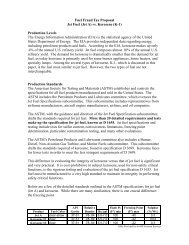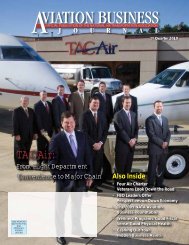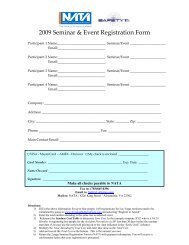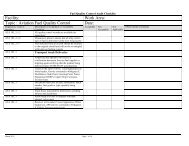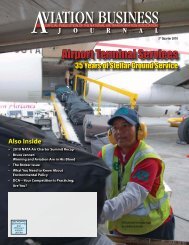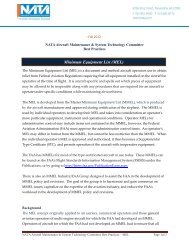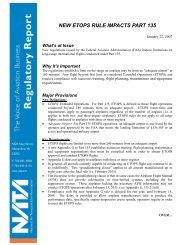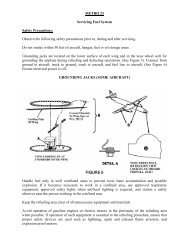Computer-Based Maintenance Tracking Flight Training ... - NATA
Computer-Based Maintenance Tracking Flight Training ... - NATA
Computer-Based Maintenance Tracking Flight Training ... - NATA
- No tags were found...
You also want an ePaper? Increase the reach of your titles
YUMPU automatically turns print PDFs into web optimized ePapers that Google loves.
Table 3. Part 121 vs. Part 135 Accident Rate 1997-20063.02.52.01.5135 Fatal135 All121 Fatal121 All1.00.50.0'97'98'99'00'01'02'03'04'05'06non-commercial because no passengers or cargo arecarried, are nonetheless conducted at the requestand for the benefit of the certificate holder. Well,the answer is a qualified “maybe.”In fact, it is likely that a case-by-case determinationbased on the facts of particular accidents isneeded. Although there are lessons to be learnedfrom any accident, those that occur under Part 91operating rules but under the direct control andoversight of a Part 135 certificate holder deserve theindustry’s studious attention.A recent FAA Safety Alert for Operators (SAFO)spoke directly to Part 91 positioning legs. Accordingto the SAFO, of all turbine airplane accidentsfrom 1997 through 2005, 48 accidents (more thanone quarter of all turbine airplane accidents inthat timeframe) occurred during a flight the NTSBidentified as a “positioning” flight in the accidentreport. The purpose of the positioning legs includedpicking up passengers, maintenance ferry flights,“tail end” ferry legs, and other reasons.One pointed example is a June 2004 accidentinvolving a Beech 200. According to the NTSBprobable cause report, an IFR flight plan and slotreservation had been filed for the planned flightover mountainous terrain. The flight crew intendedto reposition to an airport about 30 miles southeastof the initial departure airport, pick up passengers,and then complete a revenue flight to anotherContinued on page 22Aviation Business Journal | 3 rd Quarter 200721


